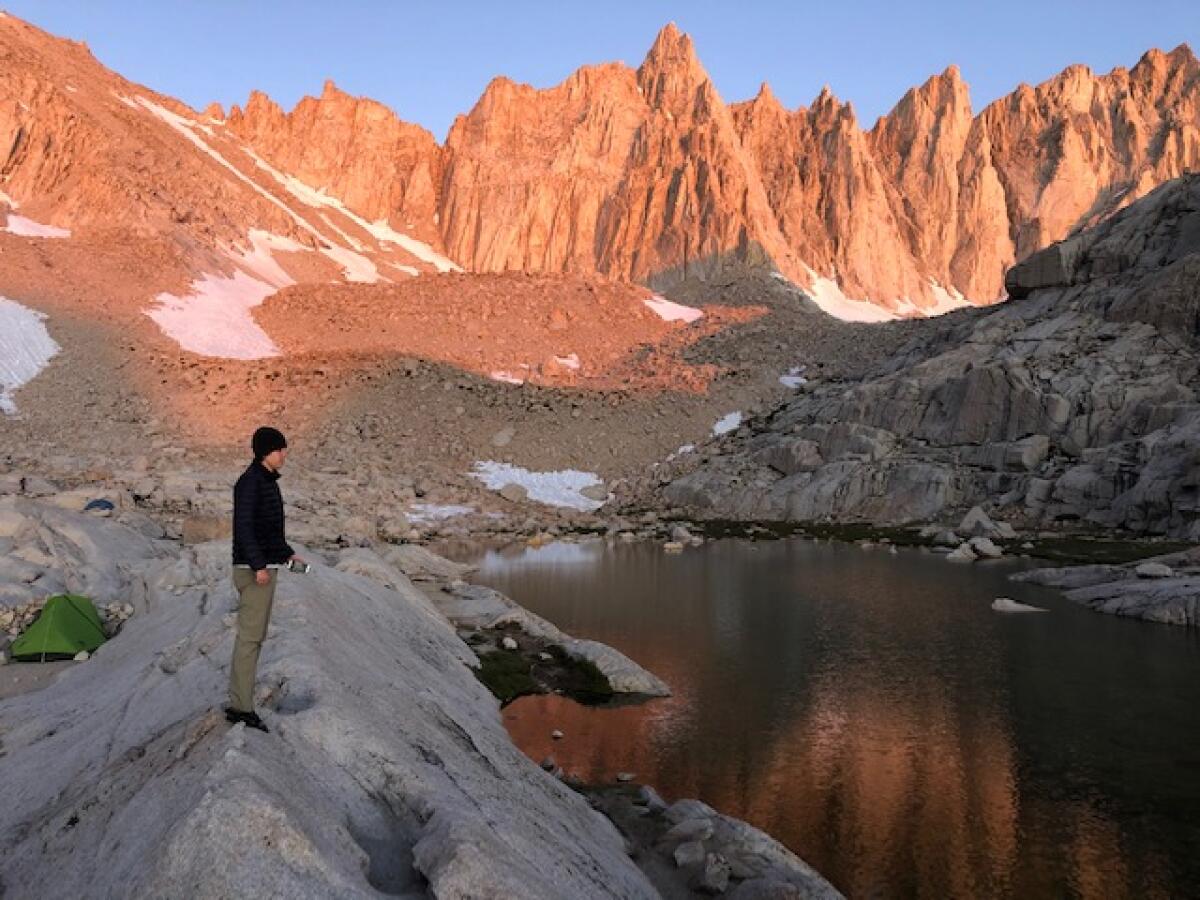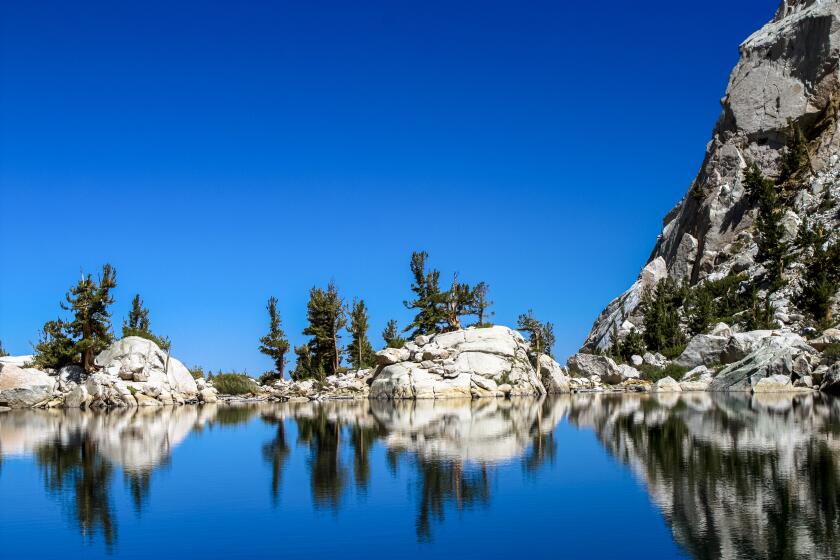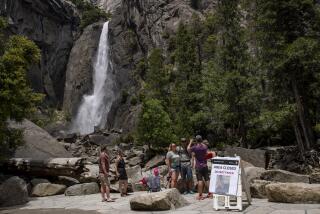Want to hike Mt. Whitney this year? Here’s how to apply for the lottery

- Share via
If you’re hoping to climb Mt. Whitney in 2023, Wednesday is the beginning of the drama. That’s when U.S. Forest Service officials open the monthlong lottery for permits at Recreation.gov.
The lottery will be open Feb. 1 through March 1, with applicants obliged to choose whether they plan to climb in a day or over multiple days. Results will be announced online March 15, when good or bad news will be posted to hikers’ personal profiles on the website. Last year, 29% of lottery entrants got good news. The year before, 28%.
At 14,505 feet (or 14,494, depending on which expert you ask), Mt. Whitney is the highest peak in the Sierra Nevada and the contiguous U.S. The most common path to the top includes 6,200 feet of vertical gain from the trailhead at Whitney Portal, 14 miles west of Lone Pine in Inyo County.
With the right conditioning plan, trekking to tallest mountain peak in the Lower 48 is more attainable than you think.
It can be dangerous, especially when snow remains on the trail. The Inyo County Sheriff’s Department reported at least four Whitney climbing deaths in 2021 and 2022, many of them “in spring or early summer due to falls on snow and ice.” Despite drought conditions throughout the West, the National Weather Service and California Department of Water Resources officials have reported an unusually heavy snowpack in the Sierra Nevada so far this winter.
“At higher elevations the snow might linger as late as July,” said Lisa Cox, public information officer for Inyo National Forest, in an email Tuesday. “People will need ice axes, crampons, and additional skills (and training) to travel on snow and ice-covered slopes. This shouldn’t necessarily deter people from going, but [be] prepared to turn around before reaching the destination of your choice, a.k.a the peak.”
The trailhead is 8,374 feet above sea level. From there, the most popular route is a 22-mile route up the mountain and back, including a stretch of 99 switchbacks near the top. In all, the trail typically entails 12-14 hours of climbing (and packing out your own waste in a WAG bag, named for Waste Aggregation and Gelling).
U.S. Forest Service officials call the route “non-technical, but strenuous” when it’s free of snow, which is usually from July to late September.
Aspiring hikers will need to give the size of their group (maximum 15) and the day(s) they hope to hike, with up to 10 alternate choices allowed.
Winners need to pay a $6 reservation fee per permit and a $15 recreation fee per person and fill in reservation details by 9 p.m. April 21. If there are dates left open, would-be climbers can seek reservations online (first come, first served; no phone applications) beginning at 7 a.m. April 22. Though walk-up permits have been possible in the past, there are none this year.
The vast majority of hikers go up during “quota season,” May 1 through Nov. 1, when officials set a daily entry limit of 100 day-use climbers and 60 overnight climbers. The Forest Service forbids resale or transfer of permits, and there are no rain checks.
Inyo National Forest’s Cox noted that some climbers who win the lottery later cancel their permits or reduce the size of their group, “so permits may pop up again.” She suggested regular checks of Recreation.gov.
In 2022, officials took 26,767 applications Feb. 1 through March 15 and turned away 71% of applicants. The 29% of group leaders who won (that is, those who were awarded one of their requested dates) included 2,739 planning overnight climbs and 4,243 seeking day-use permits (which are only good for 24 hours, midnight to midnight).
More to Read
Sign up for The Wild
We’ll help you find the best places to hike, bike and run, as well as the perfect silent spots for meditation and yoga.
You may occasionally receive promotional content from the Los Angeles Times.








